Durkheim published his last major work, Les Formes élémentaires de la vie religieuse. Le système totémique en Australie, in 1912. The book was expected: in the preceding years he had published articles in L’Année sociologique on primitive classifications and the incest prohibition, among other texts1, and amassed notes from his reading of turn-of-the-century ethnology and sociology of religion studies written in several languages. That his corpus contained few studies of monotheist religions or members of the category Weber named “universal religion” may seem surprising in retrospect. But Durkheim’s perspective was governed by his methodological choice always to begin with the “elementary”, and it was precisely this choice that made that perspective so fruitful. Moreover, we should not underestimate the work’s status as his crowning achievement: in it Durkheim formulated propositions about the very meaning of sociology and its role in modern societies: sociology was not merely a type of knowledge but a means of transforming “life” forms. But this it could only do by both analyzing religion sociologically and explaining the social function it fulfilled.
His subject was indeed life. Religion of course, but religion understood not first and foremost as a doctrinal system but rather as a domain of experience in the lives of individuals and groups. In this sense, Durkheim explained, we could speak of “religious life” as we would of economic or intellectual life, thereby circumventing the imposing word “religion”, so heavily charged with preconceptions.
The elementary and the primitive
The term “elementary forms”, meanwhile, is yet another case of non-alignment with the common usage of his time. Here what Durkheim managed to do was steer clear of the word “primitive” and its disparaging connotations, which were difficult to control. “Primitive” was first used in the nineteenth century by such authors as Morgan and Sumner Maine; it was also current in German ethnography (Steinmetz, Schmidt) and English anthropology (Tylor, Frazer, Lang). The Durkheimians and Durkheim himself also used it, but in a specific sense that we can grasp by examining the shift in this book to the word “elementary”. What we discern clearly in it is a refusal to see the primitive as a first stage in a unilinear evolutionary chain, a stage that was gradually left behind as “progress” was made toward the so-called civilized forms. On the contrary, the “evolved” continued to contain or encompass the “elementary” – its continued presence was precisely what made the evolved “complex”.
Thus translated into the “elementary”, the primitive acquired the status of methodological category. The elementary possesses a hidden methodological advantage over the complex, one that determined Durkheim’s analysis of the complex. That advantage was to render visible the nervures of religious life. The complex continuously actualized them, obscuring their form. In a word, the complex was composed of the elementary. And though we had to be careful – as dictated by the positivist principle Durkheim inherited from Comte – not to reduce the complex to the simple, if the complex had not reorganized the elementary, it (the complex) never would have attained real complexity. And this in turn meant that we would never have understood what characterizes our religious life.
What this tells us is that Durkheim’s attitude toward primitivist evolutionism as transmitted from Morgan to Tylor, Frazer and Lang was profoundly ambivalent. On the one hand, Durkheim did not deny that evolution had occurred or that changes could be identified between ancient, primitive religions and late, monotheist religions, changes that could be read and interpreted as a shift from the simple to the complex. On the other hand, his guiding purpose was to destroy a fundamental lever of evolutionism, which he did by mounting a direct attack on the retro-projective move induced by the notion of evolution and the more or less explicit hierarchical ordering that move generated. What Durkheim could no longer accept was that the simple was less religious than the complex. On the contrary, in and through his thought the elementary acquired an entirely new coherence and dignity. That dignity derived from the heuristic advantage offered by the elementary, explicitly attributed to it by Durkheim. For it was our retro-projective move that explained our implicit sense of teleology and therefore our illusion about ourselves. By understanding the primitive to belong to a regime of imperfection, we posited – without naming it – a perfection that we saw as exclusively our own, thereby depriving ourselves of a perspective that would allow us to discover in what way we ourselves were religious.
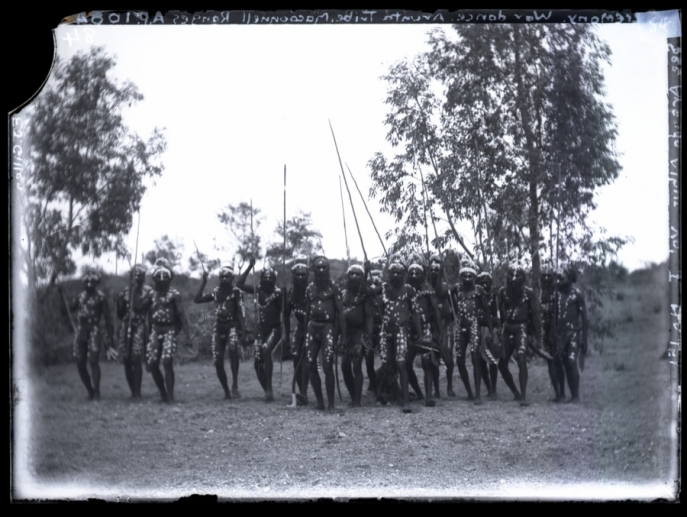
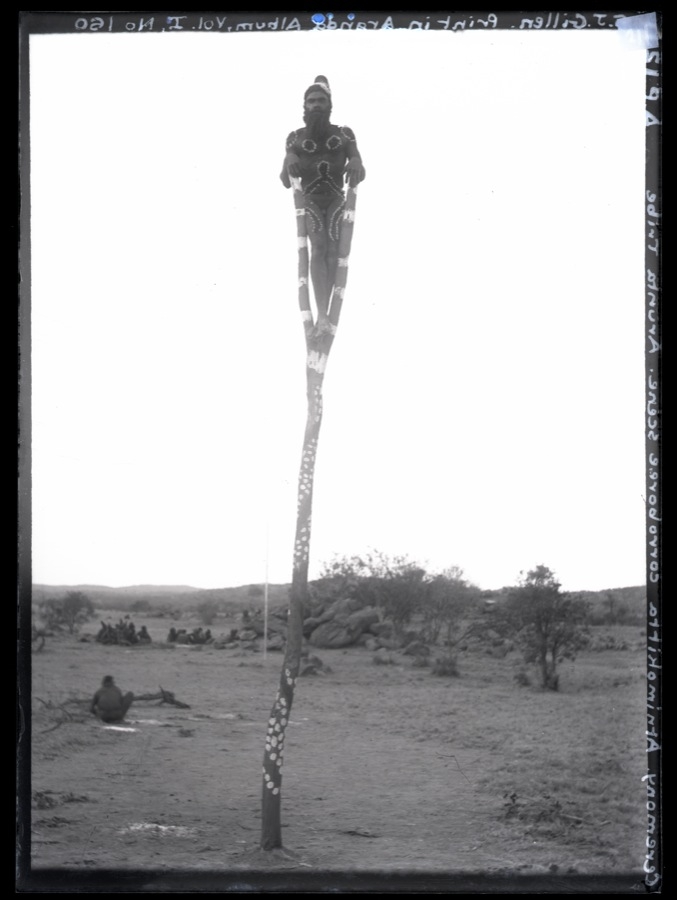
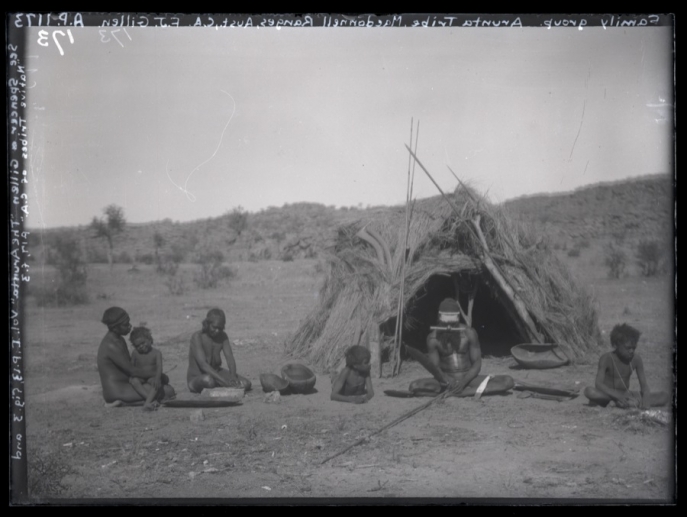
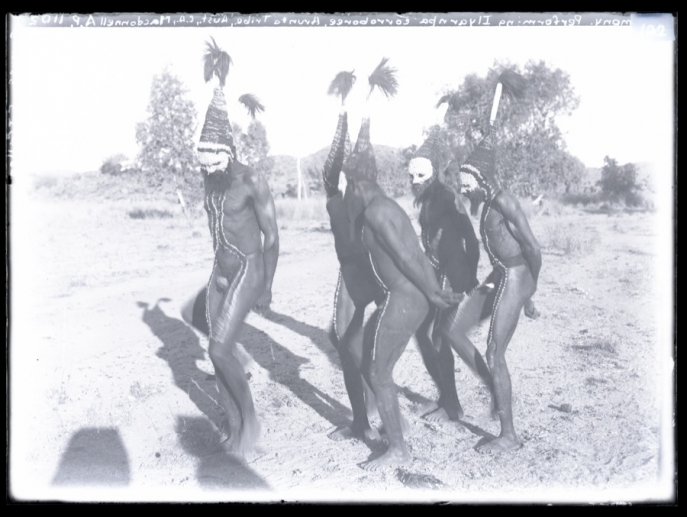
A camp, a group of men and two religious ceremonies of Arunta, one of the societies studied by Durkheim in The Elementary Forms. The photographs were taken by the anthropologist Francis James Gillen (1855-1912) whose study, with Walter Baldwin Spencer (1860-1929), The Northern Tribes of Central Australia, published in 1904, is the main ethnographic source used by Durkheim in his book.
This critique of primitivism, intensively analyzed from functionalist and structuralist perspectives to the point where the very concepts of culture and a divide between nature and culture have been thrown back into the crucible, has long since been metabolized by contemporary anthropology. Does that mean that it has lost its acuity and now has no other virtue than being obvious? The critique has become so familiar that it may seem superfluous to call it back into service. But while it can indeed be used to wage sound battle against evolutionism, we must still be careful how we go about it. It cannot be denied that the first versions of unilinear evolution as well as more recent versions developed in a socio-biological framework are rightly criticized as reductive, finalist and ethnocentric. Or that Durkheim’s thinking stands as the first major critique of evolutionism. But his work contains another type of argument as well, one that infuses his anti-evolutionist position with more profound and much less conventional meaning. Here we touch on today’s very own epistemological problem of determining the level of contrast, as it were, needed to make genuine historical dynamics visible and to apprehend those historical dynamics as differentiated processes of social change.
What am I referring to here? The trap not to fall into is the evolutionist sophism that confuses 1) a move to superimpose the complex on the elementary, which in turn induces us to judge the elementary as incomplete, in gestation, imperfect compared to the final achievement incarnated by ourselves, with 2) reconsidering the complex in terms of the elementary and thereby recapturing or restoring our experience – that which makes us socio-historically who we are – by way of this crucial experience of the elementary.
One of the most acute epistemological problems in the social sciences today is surely that the legitimacy of 2) seems compromised by the critique inherent in 1), which critique, as explained, is perfectly consonant with our ways of thinking. For we imagine that in accepting 2) we fall back into precisely what 1) combats. But this is not necessarily so. It might even be said that the reason we believe 2) annuls what we gained through 1) is that we have not sufficiently symmetricized the positions. If we had we might understand that the right way to proceed is to move all the way to us; that is, to manage to see ourselves in that which is not us but which, though different from us, is composed of the same elements as we are, just differently combined. In sum, we have not granted enough reality to the otherness that we think we have recognized as such; we have not taken the analysis far enough see ourselves in that otherness.
Taking the analysis far enough is exactly what Durkheim did in this pathbreaking work – for the very first time in the history of the social sciences, and well before Dumont, who is usually credited with making this decisive comparativist discovery2. The so-called primitive religions, Durkheim tells us, were complete, completely religious; they contained all the defining components of religion, everything that makes a religion a religion; there was nothing to add to them; they lacked nothing. And this in turn meant that their components were still present in all religious life, including our own. The crucial experience we can have of religious life redounds on our self-perception, thereby enabling us to catch our own reflection in the mirror of the elementary. Our religions integrate other dimensions; they made the initial forms more complicated. But that process of complication, Durkheim tells us, should be understood as nothing more than a dynamic for combining forms that were all fully present in the “already” perfect primitive religions.
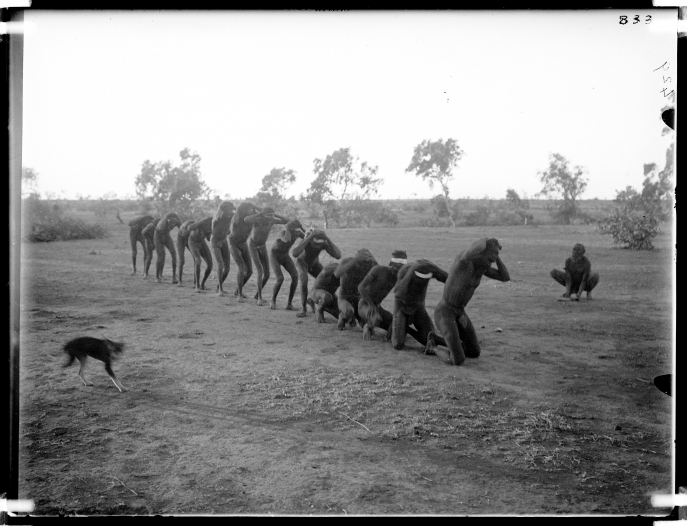
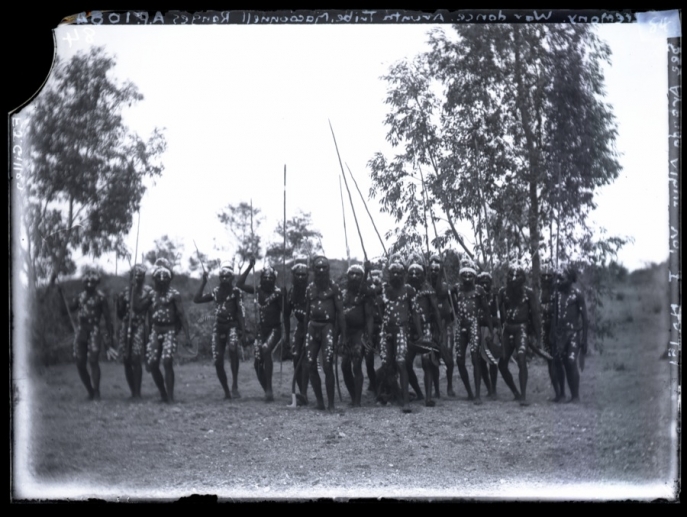
Another Australian society mobilized by Durkheim in his analysis, that of Warramunga. The photographs of F. J. Spencer present a group of men and a ceremony.
This is conveyed by the strong restriction imposed by the original subtitle: Le Système totémique en Australie. Such a subtitle suggests that what we have before us is an ethnological study, even an ethnographic one. But the book is not of that kind. The demonstration is of course largely based on Australian ethnography – though not exclusively: Americanists had also investigated totemic systems, and Durkheim took their studies fully into account though they did not have the same test value for him as Spencer and Gillen’s study of the Arunta. We know that Lévi-Strauss in Le Totémisme aujourd’hui (1962) [translated into English under the title Totemism] both recounted how the totemism theme had circulated in the first half of the twentieth century and denounced totemism as an “illusion” created by anthropology itself. What we perhaps do not know is whether the category actually disappeared as the discipline developed or was only re-qualified and integrated into a wider reflexive category – as its reappearance in Philippe Descola’s recent typology of relations between interiority and physicality suggests, together with a number of Africanists’ even earlier reinvestments in totemism (1980s)3. However that may be, Durkheim published his contribution during the theme’s golden age (it will be recalled that Frazer’s monumental treatise, Totemism and Exogamy, was published in 1910). At the time, totemism was seen as the representative type of primitive religion, the understanding being that this was the belief and cult or worship regime to be found in all primitive religions. It also furnished a differentiating concept – no small gain for the evolutionist illusion – that could be used to position those religions on a lower “rung” than Ancient ones, first and foremost the religions of the Greeks and Romans, which thereby acquired the status of mid-point in the great civilizing process whose summit we implicitly reserved for ourselves.
Here again we need to be attentive to the singularity of Durkheim’s thinking in this context. What is important in the book’s subtitle is not so much the reference to totemism as the term “système totémique”: totemism was a system, a formal program, as it were, that generated or constituted the elementary forms of religious life. It becomes clear why we should see totemism not as regressive belief in incarnation and the materialization of spiritual powers and transcendence but rather as the system of ideas and practices, representations and acts, that gave elementary religion its form – with the understanding that this systematics did not disappear in complex beings but rather took on other forms and was deployed in configurations that were more difficult to analyze.
Clearly we were no longer totemists: we no longer found the objects of our beliefs or our ritual prohibitions in vegetal or animal species nor did we project our social morphology onto them; we did not determine what our licit and forbidden alliances were on the basis of totems. And yet, Durkheim tells us, we were still attached to something of its “systematics”. In totemic systematics lay the secret of what makes a religion complete, that upon which all religious life depended, including our own. With the result that, once again, to understand its pure type – i.e., the Australian variant – was also, in accordance with the methodological principle specified above, to understand ourselves, to understand ourselves in connection with an aspect of our own religiosity that we did not perceive.
The ceremony of transfer of Jean Jaurès' ashes to the Pantheon on November 23, 1924, as presented to British news (British Pathé): an expression of the sacred republican.
The full title of the work, then, must be taken seriously and to the letter. Durkheim had carefully weighed each of the words it contains: “life”, “elementary”, the subtitle referring to totemism as a “system”. Lastly, more discreet but equally decisive, is of course the word “form”. A closer examination of Durkheim’s use of this word will bring to light another dimension of the book.
Forms of thought
For, in addition to being a founding text of sociology of religion and a first attempt to conjoin ethnography and sociology – the effect of which was to give birth to modern ethnology4 – Les Formes élémentaires is also a philosophy book. It can even be claimed, given the issues it raises and the radical nature of its conclusions, that it is one of the most important philosophical texts of the first half of the twentieth century. But what philosophy are we referring to exactly? To begin with, philosophy of knowledge, today more broadly called philosophy of mind.
What Durkheim discovered in pursuing his investigation was nothing less than a theory of the social genesis of the categories of human understanding – precisely as categories in the Kantian sense of objective, necessary and universal mental frames. The singularity of Durkheim’s thought here, as we immediately see, is his understanding of the social genesis of thought categories by way of religion as historical, or socio-historical, and therefore empirical, rather than transcendental. Concomitantly, Durkheim situated this genesis resolutely in the field of logic, with the understanding that it satisfied all the requirements thereof. This point is worth stressing. To demonstrate that Durkheim’s work is indeed philosophy and not a sociological or ethnological relativizing of a classic philosophical problem (as we might more simply have expected), we need to understand what that genesis, both logical and historical, consists in. But we can only do so if history is understood as expressly social.
Once again the fear arises that in our current way of seeing these questions they have lost some of their edge and that the audacity of Durkheim’s move is now lost on us – just as it seemed in the preceding discussion of evolutionism that we only grasp one side of the reasoning and can no longer get a purchase on the other, or that we find it annoying or unsettling. That others should be as worthy of attention as ourselves is something we readily accept, but seeing ourselves in, through, or by way of others is an effort that runs up against other obstacles, for it requires us to discover a kind of unity between them and us, and therefore to probe historically what we are made of, precisely to discover what is singular about us. Grasping our singularity as our own – that is, as an integral part of us that cannot be thrown off like a light mantle: there lies the difficulty.
And it is the same problem as the earlier one. It was not Durkheim’s intention to say that categories of understanding are rooted in the particularity of the differing social experiences of the subjects who conceive and use them, or that the access offered by those categories to an objective truth is therefore relativized, that it is something less than full-fledged, universally valid objective thought. Rather that from the moment thinking by way of concepts exists it is universal, and that conceptual thinking occurs equally in every society – precisely because the reality of concepts as such follows from social existence.
Of course, while conceptual thinking took place equally in all societies, it did not take place identically in them. Universality of thought was not attained – that criterion was not satisfied – by way of all categorical systems, even though those systems, precisely because they were categorical, did guarantee that in each case this was indeed objective thought, logical in the strong sense of the term. Lévy-Bruhl’s thinking fell back into the rut of evolutionism when he affirmed that primitive thought belonged to a pre-logical stage. And in his notebooks at the end of his life he admitted he had been mistaken5. Durkheim in the Formes élémentaire was not mistaken. But his understanding led him to speak of logic as socially diffracted, and thereby – in true socio-logical fashion – to understand sociology as the topography of paths for acceding to universal thought. From a philosophical perspective, this amounts to seeing sociology as the explanatory basis for the universality and necessity of thought, the cornerstone of the demonstration of the objectivity of conceptual thinking.
To enter into Durkheim’s philosophical demonstration of this, we need to clarify two points: first, the relation between this question and the study of religion, which Durkheim called the study of the forms of religious life; second, the definition of logical thinking he accredited in identifying religious life as the source for the social genesis of thought categories.
It is at this point that we can present and discuss Durkheim’s definition of religion, the one he forged in the first chapter and that is highlighted in most current presentations of his thought:
A religion is a unified system of beliefs and practices relative to sacred things, that is to say, things set apart and forbidden – beliefs and practices which unite into one single moral community called a Church, all those who adhere to them.
To which Durkheim immediately added:
The second element thus holds a place in my definition that is no less essential than the first: In showing that the idea of religion is inseparable from the idea of a Church, it conveys the notion that religion must be an eminently collective thing6.
This definition, formulated very early on in the work, opened the way for his empirical study of the Australian case and was a spur for moving it forward. As mentioned, Durkheim’s method never varied, regardless of the subject under study: suicide, the division of labor, morality, or religion. The first problem was to circumscribe the “fact” in question, to determine an observation criterion: how do we recognize a phenomenon as religious rather than something else? His definition of religion served to frame and guide the investigation, but it could only be validated at the end, when each of its components had taken on a meaning that could not have been imagined at the start. At the end of the investigation, then, he was no longer determining the observation criterion but rather explaining the phenomenon, expounding the reasons it appears as it does. What we see here is the arrow in flight. Earlier we only sensed that religion was “eminently collective”; we did not yet know what makes it so; that is, at what level and in what ways social determinations intervene in the constitution of the religious as religious.
In response to these questions Durkheim lay down two interlinked criteria, both of which had to be met. To be a religion a phenomenon had to include 1) the sacred, beliefs and practices relative to sacred things, along with the cult or worship, at once practical and representational, and 2) a community of followers, those commonly called “the faithful”. Without the faithful and worship, there could be no religion – that is how the definition unfolds. It follows that when faith is strictly an internal matter, there is no pure religion. The complex, i.e., our situation of moderns infused with subjectivism, might mislead us into believing that faith within the individual could be religion, but the elementary dissipated that illusion. It becomes clear at this point that we will have to return to the complex later, to examine what becomes of the interlinked criteria of community and worship in it, specifically, in Protestantism, where individualization has been pushed to an extreme – Protestantism, which, for the entire sociological tradition, German and French alike (and regardless of their different assessments), constitutes the enigmatic key to modernity.
But to return to our philosophical question, how does it fit with the definition of religion Durkheim adopted? What makes it appear a question that must be answered, rather than a lateral, accessory one? In Durkheim’s two interlinked criteria what we have is what has been, since Kant at least, the composite attribute of objective knowledge: necessity and universality. Necessity of a particular type, of course; likewise universality of a particular type. But necessity and universality nonetheless.
Let us first consider the sacred. The sacred was the ethnological root that Durkheim determined as necessary, to which he assigned the idea of necessity, the idea that from Hume to Kant had oscillated between an empiricist pole – necessity as the combined effect of habit and belief in experience – and a transcendental one – necessity in the strong, irreducible sense, pertaining to the a priori structure of the mind, independent of experience. Durkheim’s astonishingly bold answer to that philosophical binary opposition was that the sacred, our experience of it, was the empirical source of real necessity, endowed with all the attributes that Kantian thought epistemologically conferred on it. But what had to be specified was that this experience was had not by an isolated individual but by a group. It impacted upon the minds in that group, bequeathing them mental frames endowed with the force of necessity, the constraint of the conceptual: the power of logic. This group experience, which was what gave concepts their power, was therefore of a religious nature. From the moment there was a society, a true group – from that moment, according to Durkheim, there was collective experience of sacred things. What were sacred things? In certain things, Durkheim explains, a power that transcends individual consciousnesses, a power of the collective as such, detaches itself and becomes objective, bears down as a constraint endowed with the absolute, and takes the form of necessity in individual minds.
But there is more. In this way, i.e., through the path of religion, individuals in the group not only gained access to necessity-endowed thought; they also accessed the same thought: they communed in it. When they had this experience, they were a group; this experience consolidated them into a group that acceded to the same level of thought. This meant that what had been constituted was not only the necessity but also the universality of concepts. People think logically in that they are social beings. Once again, this understanding does not relativize logic. It is instead a justification of logic, one that sociology of religion alone can provide.
And that justification necessarily operates through religion. The fundamental categories of understanding, the seeds of scientific thinking, were religious in nature – that, Durkheim tells us, is what sociology can prove, and it is a fact that in no way implies a degradation of science.
Sociology and political philosophy
Now that we have grasped the three stages of Durkheim’s breakthrough – sociological, ethnological and philosophical – we are faced with one last problem, this one a problem of political philosophy. And it touches us quite directly, as it concerns the place of religion in the space of thought and, more generally, in the space of a social existence that we can and must describe as secularized.
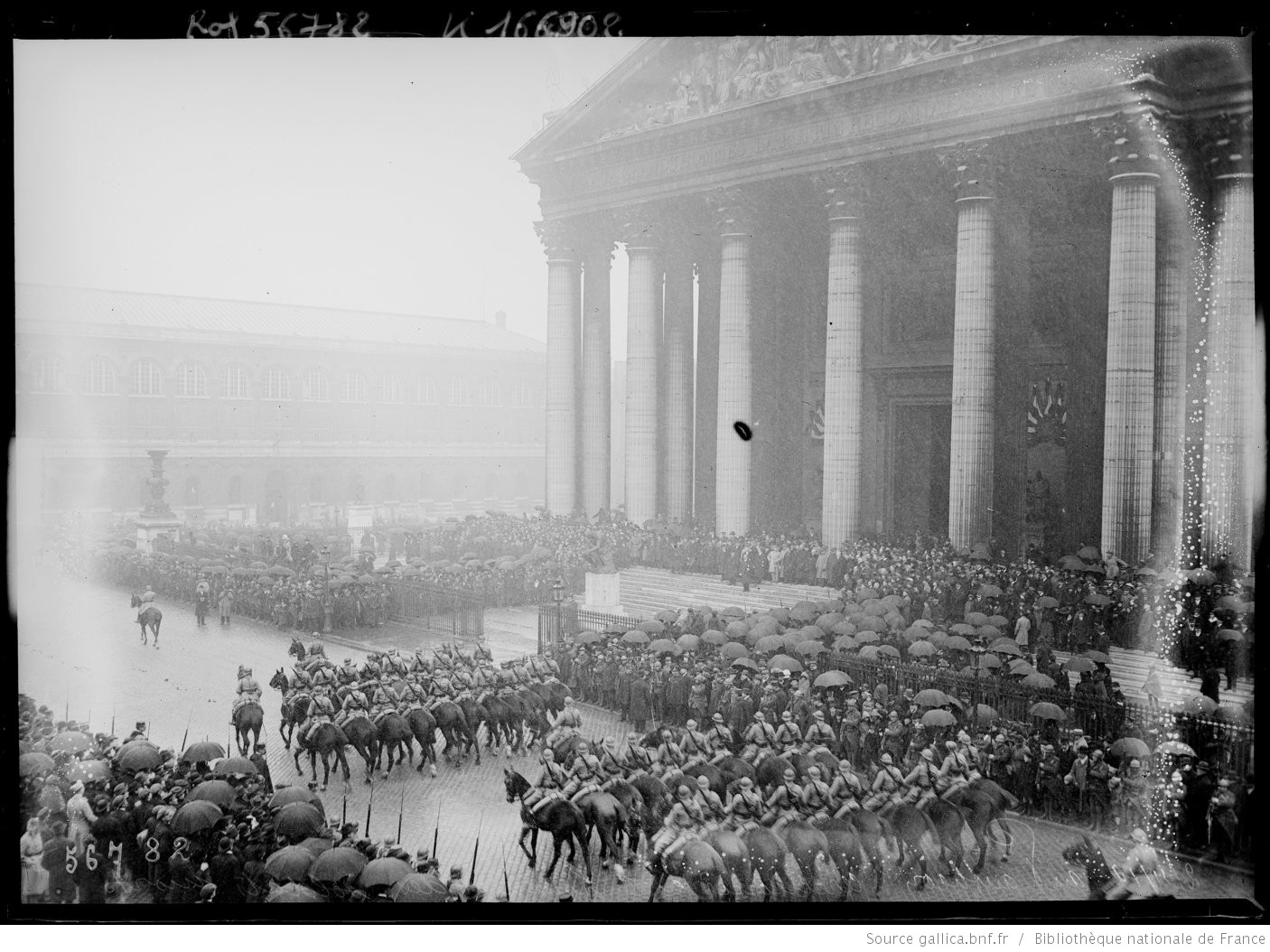
Cérémonie au Panthéon en l’honneur des soldats morts pour la patrie, le 2 novembre 1919.
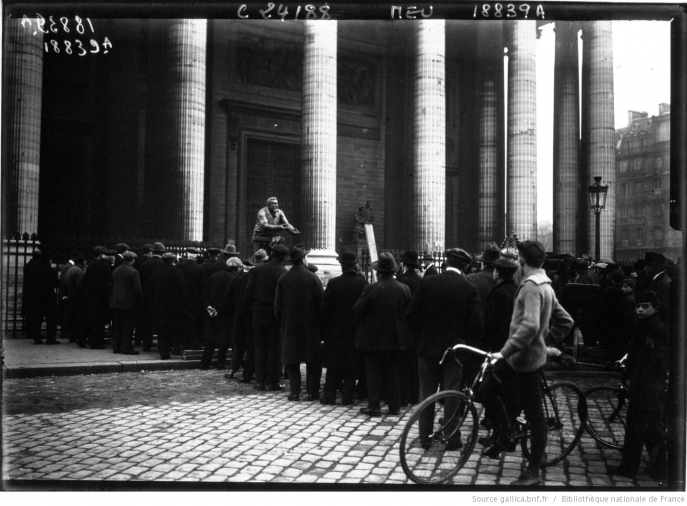
The transfer of the heart of Leon Gambetta (1920) and the ashes of Jean Jaurès (1924) at the Panthéon.
This is the subject of Durkheim’s conclusion, in which he dares make an incursion into the destiny of modern societies, suggesting that it depends on the place those societies grants to religiosity, a term that remained to be defined. Sociology, ethnology, philosophy of knowledge and ultimately political philosophy – this is the complete arc of Durkheim’s demonstration. Why bring up this question? Because here, without going back on anything he has so far affirmed, Durkheim specifies something extremely important. Showing as he has that there can be no logical or scientific thought without religion does not mean saying that the purpose of religion is to fuel logical or scientific thought, regardless of the society. In no society does religion – whether given as primitive or evolved – serve the purpose of acquiring knowledge. The fact that religion impacted on knowledge, that it bequeathed us a legacy in the order of thought, does not mean it is a “donor” whose primary purpose is the knowledge it makes possible. That is not the function of religion, either in a society where science is fully developed, that is, a society characterized by a logical mind specialized to the point where logic penetrates our conceptions of the natural and human worlds, or in a society whose type of mind is inchoate and not sharply specialized, and the mind can only penetrate the natural and human worlds with the help and under the directives of religious representations.
What then, was the aim of religion, always and everywhere? Here the definition Durkheim began with – Religion is the link between the sacred and the community–proves insufficient as it does not include the most profound operation of religion: salvation. Every religion aims to procure salvation–salvation as the transcending of present experience, extirpation from the misery of experience, the attaining of an idealized sphere. That sphere is not merely a state of health, of satisfaction of our physical needs (and it matters little here if we are referring to the physical needs of the individual – we are all individuals – of those of the group we form), but an ideal place where good triumphs over evil: in sum, a sphere of justice and truth. Commentaries on this book generally fail to mention the great analytic labor Durkheim performed on the concept of salvation. His thinking here is extremely fine, and quite as strong as Weber’s in his immense work on sociology of religions, organized to a great extent around this obscure center.
The spontaneous gathering Place de la Republique on January 7, 2015, after the attack aimed at the HQ of the weekly Charlie Hebdo.
Salvation is indeed the decisive point here once we understand that it is in salvation that the believer’s individual experience links up with the collective experience brought to light by Durkheim-the-sociologist. In a word, salvation is the aim that accounts, within and for the individual, for the fact that the only way he can pull himself out of himself, the only way she can rise above her present condition of needful being, is to live as a social being. Religious life alone is what makes this possible, Durkheim tells us, as it “arranges” and ensures for individuals the twofold experience of the sacred and the common or shared. Salvation, then, is socialization of the individual within the sphere of the ideal. It is the individual’s means of plugging directly into what society can procure for him in the way of transcendence. But transcendence in what sense? Not as an abstract idea, hypostasized in the figure of the divinity, but rather lived transcendence, transcendence through action, access to a type of action in which the individual feels she is “stronger,” capable of more – where he peut d’avantage [“can more”], as Durkheim enigmatically expressed it7.
The fact is that because human action can only be rejuvenated, revitalized, this way in and by society – and that, conversely, such action is what enables society to exist and maintain itself – the risks involved are immense. By way of religion, the social agent can do more than in isolation because she can conceive of salvation, and to conceive of salvation is to move beyond the merely self-interested good of individual desires that have at last been satisfied. Through religion, the social agent takes nourishment from things that can and do give him an experience of something greater, offering ideality as the aim for his action, the aim of helping to make good triumph over evil – the aim of justice, which is intrinsically social because there can be no other justice than a society which we have made better than the one in which our present life unfolds.
In itself, and to the extent that it corresponds to the above-described mental and practical dynamic, the power of religion is fundamentally good, Durkheim tells us. Good in that a society cannot limit itself to materially sustaining its present functions without ultimately collapsing in on itself. It follows from this that a society lives on faith in the possibility of augmented actions. Its existence is always deployed toward the horizon of justice. If it were not, it would grow “depressed” and die. However, augmentation becomes a trompe-l’oeil and a danger if the aim of salvation becomes frozen into the postulate of a fixed image of an ideal society – a society that imposes itself against real society. For religion can only do its work – i.e., introduce practices for ensuring salvation in the form of an internal labor of idealization – in real society. As soon as that labor is interrupted and becomes religious dogmatism wherein reality is denied, wherein a “true society”– of the sort that religion itself postulates – is brandished against reality, then the effects of religion turn against society: society allows itself to be penetrated by contrary forces that become pure violence, ignorance of the meaning of justice as practiced by real actors or as the aim real actors are seeking to attain. Under those conditions, the sacred no longer generates or triggers augmented action; faith no longer works to idealize action; the common and shared no longer operates inside the individual and society no longer seeks to move toward a more just existence. What we witness instead is a sacralizing of the powers-that-be, faith dogmatically imposed against the mind’s freedom, and a petrified, exclusive community erected against those whom it decrees to be infidels.
Such is the decidedly timely lesson we can draw from the closing pages of this last founding text of French sociology. Religion’s secret treasure – i.e., the idea of salvation it contains – is also society’s greatest peril, particularly for modern societies, where freedom of the mind is considerably developed. We must therefore defend ourselves against its powers. But we can only do so with the help of the social sciences, which, taking a different path, have managed to enhance religion: by understanding it in terms of its permanent, irreducible function of rejuvenating and revitalizing human action, as the agent that introduced and ever reintroduces an aim that drives social practices to transcend present existence and the injustices that mar it. This in turn means that what Durkheim’s study of religious life reveals is the implication of political philosophy in sociological knowledge itself.
.
Notes
1
See, for example, Émile Durkheim, “La prohibition de l’inceste et ses origines,” L’Année sociologique, vol. I: 1896-1897, 1898, pp. 1-70; “De la définition des phénomènes religieux,” L’Année sociologique, vol. II: 1897-1898, 1899, pp. 1-28; and Émile Durkheim and Marcel Mauss, “De quelques formes primitives de classification. Contribution à l’étude des représentations collectives,” L’Année sociologique, vol. VI: 1901-1902, 1903, pp. 1-72.
2
See in particular Louis Dumont, Essais sur l’individualisme, Paris, Le Seuil, 1983.
3
Philippe Descola, Par delà nature et culture, Paris, Gallimard, 2005. Studies by Alfred Adler and Michel Cartry, as well as several issues of Systèmes de pensées en Afrique noire.
4
In this connection see the following two eloquent texts: Radcliffe-Brown, The Sociological Theory of Totemism, 1929 (London, Cohen and West, 1952) and Lévi-Strauss, “Ce que l’ethnologie doit à Durkheim,” 1960, published in Anthropologie structural II (Paris, Plon, 1973).
5
Lucien Lévy-Bruhl, Les fonctions mentales dans les sociétés inférieures, Paris, Alcan 1910; Carnets, Paris, Presses Universitaires de France, 1949.
6
Les Formes élémentaires de la vie religieuse, Paris, Alcan, 1912, p. 65. Published in English under the title The Elementary Forms of Religious Life, trans. Karen Fields, New York, The Free Press, 1995, p. 44.
7
Ibid., p. 595; Elementary Forms, p. 419.
Bibliographie
Philippe Descola, Par-delà nature et culture, Paris, Gallimard, 2005.
Louis Dumont, Essais sur l’individualisme, Paris, Le Seuil, 1983.
Émile Durkheim, “La prohibition de l’inceste et ses origines”, L’Année sociologique, t. I: 1896-1897, 1898, p. 1-70.
Émile Durkheim, “De la définition des phénomènes religieux”, L’Année sociologique, t. II: 1897-1898, 1899, p. 1-28.
Émile Durkheim, Les Formes élémentaires de la vie religieuse, Paris, Alcan, 1912.
Émile Durkheim, Marcel Mauss, “De quelques formes primitives de classification. Contribution à l’étude des représentations collectives”, L’Année sociologique, t. VI: 1901-1902, 1903, p. 1-72.
Claude Lévi-Strauss, “Ce que l’ethnologie doit à Durkheim” [1960], Anthropologie structurale II, Paris, Plon, 1973, p. 57-62.
Claude Lévi-Strauss, Le Totémisme aujourd’hui, Paris, PUF, 1962.
Lucien Lévy-Bruhl, Les Fonctions mentales dans les sociétés inférieures, Paris, Alcan, 1910.
Lucien Lévy-Bruhl, Carnets, Paris, PUF, 1949.
Alfred Radcliffe-Brown, “Théorie sociologique du totémisme” [1929], Structure et fonction dans la société primitive, Paris, Éditions de Minuit, 1972.









